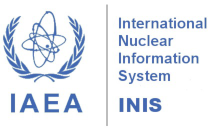Reality of radiological examinations with patients with physical limitations
DOI:
https://doi.org/10.15392/2319-0612.2025.2824Keywords:
Adaptations of radiological exams for patients with reduced mobility, Conventional radiology, Patients with physical limitations, Booklet for patients with physical limitationsAbstract
This article discusses the problems faced in daily hospital and clinical practice in Brazil, where there are no examination protocols or bibliographies that professionals can use as a basis for performing radiological examinations on patients with movement limitations and clinical conditions, such as paraplegia and tetraplegia. The objective of this study was to develop a booklet of adaptations of radiological positions for patients with reduced mobility. This material can improve and optimize the services provided in the area, offering greater radiological safety to both the professional and the patient during the examinations. The methodology used involved national bibliographic reviews, technical visits and hospital monitoring, as well as discussions with professionals specialized in the area of radiology, in order to consolidate a more concrete and specific basis for the studied content. Based on these data, it was possible to formalize a simplified booklet, in Portuguese and English versions, accessed through specific QR Codes. The booklet includes some adaptations of radiological examination positions for patients with physical limitations or reduced mobility. The booklet contains a didactic structure for quick consultation to better guide the professional regarding the performance of the examinations. It contains a cover, a presentation, a summary, an introduction, a summary of conventional exams, the adaptation of exams, the conclusion and finally the references. The conclusion of the study emphasizes the importance of expanding research aimed at adapting radiological exams for patients with physical limitations or reduced mobility. These adaptations aim not only at the well-being of the patient, but also at the health, radiological protection and ergonomic safety of professionals, avoiding injuries during the conduct of the exam or its repetition. It is hoped that this material can provide a more humanized environment for both patients and professionals.
Downloads
References
[1] SOARES, D. T. S.; HERMANN, A. P.; LACERDA, M. R.; MÉIER, M. J.; CACERES, N. T. G.; LIMA, J. Z. Care for the critical patient undergoing point-of-care testing: integrative review. Revista Brasileira de Enfermagem, Curitiba, v. 73, n.6:e20180948. p. 1-9, 2020. DOI: http://dx.doi.org/10.1590/0034-7167-2018-0948. DOI: https://doi.org/10.1590/0034-7167-2018-0948
[2] CNEN. Requisitos Básicos de Radioproteção e Segurança Radiológica de Fontes de Radiação: Norma CNEN NN 3.01. 6. ed. rev. Brasília: Ministério da Ciência, Tecnologia e Inovações, 2024, 85 p.
[3] DIRETORIA COLEGIADA DA AGÊNCIA NACIONAL DE VIGILÂNCIA SANITÁRIA. Congresso. Senado. Resolução RDC Nº 611. 51. ed. Brasília, DF: Diário Oficial da União, 16 mar. 2022. Seção 1, p. 1-16. Available at: https://www.in.gov.br/web/dou/-/resolucao-rdc-n-611-de-9-de-marco-de-2022-386107075. Accessed on: 16 Nov. 2024.
[4] FELÍCIO, C. M. F.; RODRIGUES, V. M. C. P. The adaptation of the radiologic technician to new technologies. Radiologia Brasileira, São Paulo, v. 43, n. 1, p. 23-28, 2010. DOI: https://doi.org/10.1590/S0100-39842010000100008
[5] MORSCH, J. A. MORSCHⓇ Telemedicina. Importância e orientações básicas no posicionamento em radiologia. 2019. Available at: https://telemedicinamorsch.com.br/blog/posicionamento-em-radiologia. Accessed on: 14 Sep. 2024.
[6] BONTRAGER, K. L.; LAMPIGNANO, J. P. Bontrager's Handbook of Radiographic Positioning and Techniques. 8th ed. Rio de Janeiro: Elsevier, 2015.
[7] SOARES, A. C. Boas práticas na realização de exames radiográficos com equipamento móvel. 2018. 70 f. TCC (Graduação) - Curso de Curso Superior de Tecnologia em Radiologia, Departamento Acadêmico de Saúde e Serviços, Instituto Federal de Educação Ciência e Tecnologia de Santa Catarina, Florianópolis, 2018.
[8] ALEXANDRE, N. M. C.; ANGERAMI, E. L. S.; FILHO, D. C. M. Dores nas costas e enfermagem. Rev. Esc. Enf. USP, São Paulo, v. 30, n. 2, p. 267-85, 1996. DOI: https://doi.org/10.1590/S0080-62341996000200007
[9] DAMASCENO, D. D.; SANTOS, A. A. de A.; ROCHA, A. de F.; ROCHA, D. D. Fatores que predispõem a equipe de enfermagem às lesões osteomusculares no exercício das atividades laborais. Holos, Natal, v. 1, p. 208-215, 2011. DOI: https://doi.org/10.15628/holos.2011.492
[10] ANDERSON, T. J.; BARROS, A. M.; COPELLI, J. A. C. M. Riscos ocupacionais dos técnicos em radiologia na assistência ao portador de múltiplos traumas. O Mundo da Saúde, São Paulo, v.1, n. 40, p. 106-113, 2016. DOI: http://dx.doi.org/10.15343/0104-7809.20164001106113 DOI: https://doi.org/10.15343/0104-7809.20164001106113
[11] MIATO, B. O Brasil tem 18,6 milhões de pessoas com deficiência, cerca de 8,8% da população, segundo IBGE. 2023. Available at: https://g1.globo.com/economia/noticia/2023/07/07/brasil-tem-186-milhoes-de-pessoas-com-deficiencia-cerca-de-89percent-da-populacao-segundo-ibge.ghtml. Accessed on: 20 Sep. 2024.
[12] SOARES, F. A. P.; PEREIRA, A. G.; FLÔR, R. de C. Utilization of radiation protection gear for absorbed dose reduction: an integrative literature review. Revista Radiologia Brasileira, São Paulo, v. 44, n. 2, p. 97-103, 2011. DOI: https://doi.org/10.1590/S0100-39842011000200009. DOI: https://doi.org/10.1590/S0100-39842011000200009
Published
Issue
Section
Categories
License
Copyright (c) 2025 Dra. Kátia Elisa Prus Pinho , Dra. Rita Zanlorensi Visneck Costa , Roberta Aumann, Dr. João Henrique Hamann

This work is licensed under a Creative Commons Attribution 4.0 International License.
Licensing: The BJRS articles are licensed under a Creative Commons Attribution 4.0 International License, which permits use, sharing, adaptation, distribution and reproduction in any medium or format, as long as you give appropriate credit to the original author(s) and the source, provide a link to the Creative Commons license, and indicate if changes were made. The images or other third party material in this article are included in the article’s Creative Commons license, unless indicated otherwise in a credit line to the material. If material is not included in the article’s Creative Commons license and your intended use is not permitted by statutory regulation or exceeds the permitted use, you will need to obtain permission directly from the copyright holder. To view a copy of this license, visit http://creativecommons.org/licenses/by/4.0/






















